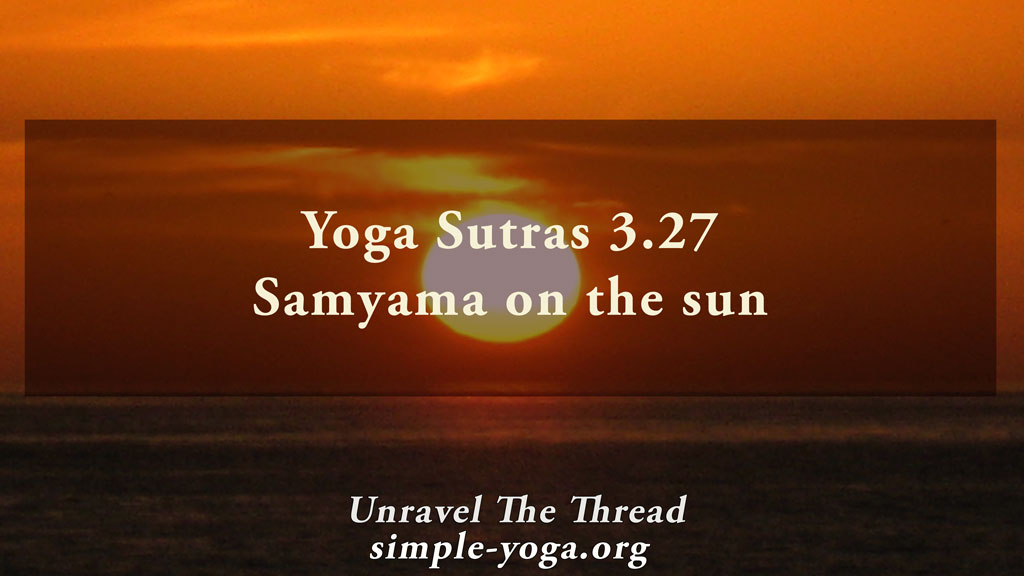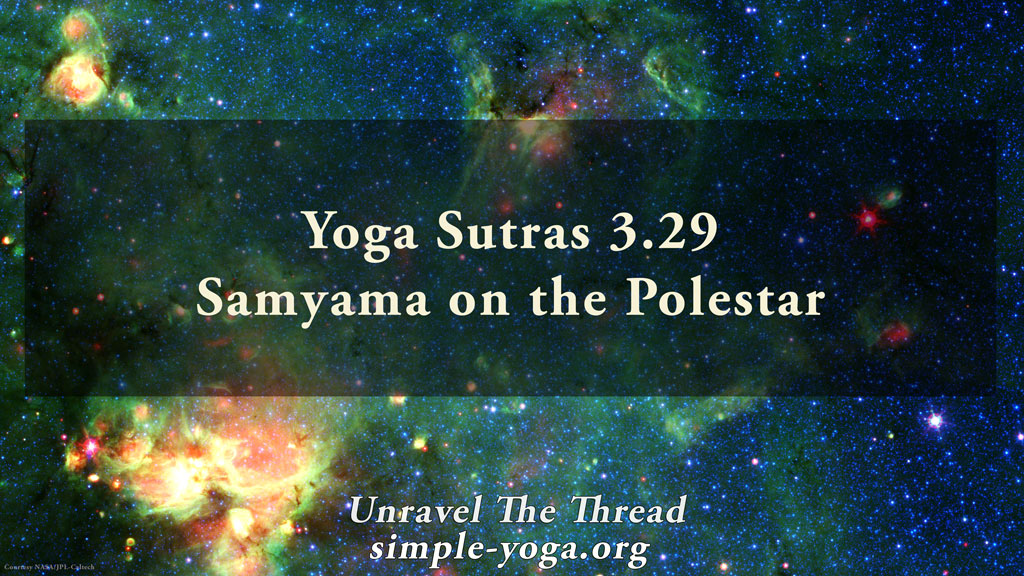3.28 Samyama on the moon

3.28 Meditative integration (samyama) on the moon results in knowledge of the constellations.
For this sutra, most commentators indicate that the focal point is the moon that orbits our planet, and that by practicing meditative integration on the moon you can learn about celestial bodies. Indeed, scientists have used the moon as a subject of study to understand astronomical events. For instance, by observing the moon, the notion that the craters on its surface were remnants of volcanoes eventually gave way to a more accurate theory, that the craters where formed by thousands of impacts of meteorites or other celestial bodies. Then, it became more evident that the earth has been, and is hit by tens of thousands of meteorites ranging in weight from dust particles to more than ten grams on a regular basis.
What happens when you choose the moon as your focal object for meditative integration?
What do you learn?
How does learning about constellations influence your perspective on you and your life?
As usual, one more way of exploring the meaning of this sutra is by chanting it.
You can choose to chant it in its traditional form with some of the words coming together:
3.28 candre tāravyūhajñānam
चन्द्रे तारव्यूहज्ञानम् ॥२८॥
Another option is to chant each word in the sutra individually:
- candre
- tārā
- vyūha
- jñānam
If you prefer, you may listen to the podcast:
This is an excerpt from the book Unravel the thread: Applying the ancient wisdom of yoga to live a happy life
If you find Simple-Yoga.org and Unravel the thread useful, consider supporting my labor with a donation, you may also donate using PayPal or Venmo. Thank you!


